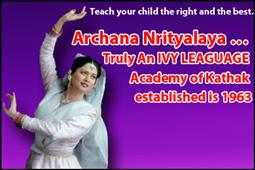The Popular Folk Dances of India
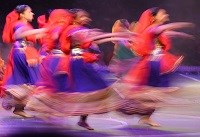
India is diverse, with a rich and varied cultural heritage. One of the most vibrant and colorful aspects of Indian culture is its folk dances, which reflect the traditions, customs, and lifestyles of different regions and communities. Folk dances are performed on various occasions, such as festivals, weddings, harvests, and celebrations. They are also a form of entertainment, expression, and communication. Folk dances are usually accompanied by folk songs, and music played with traditional instruments. Folk dances are a source of joy and pride for the people who perform them and a way of preserving and promoting their cultural identity.
In this blog, we will explore some of the popular folk dances of India, their origin, features, and significance.
Bhangra - Punjab
Bhangra is one of India's most famous and energetic folk dances, originating from the state of Punjab. Men traditionally perform it during the harvest season of Baisakhi to celebrate nature's bounty and express gratitude to God. Bhangra involves vigorous movements of the arms, legs, shoulders, and head, along with acrobatic stunts and jumps. The dancers wear colorful costumes like kurta, lungi, pagri, and phulkari. The dance is accompanied by upbeat music, played with instruments such as dhol, chimta, algoza, and tumbi. Bhangra has also become popular in other parts of India and abroad, with modern variations and fusion styles.
Garba - Gujarat
Garba is a graceful and elegant folk dance of Gujarat, performed by women during the nine nights of the Navratri festival. Garba derives its name from the Sanskrit word "garbha," meaning womb, as it symbolizes the cycle of life and creation. Garba involves circular movements of the dancers around an earthen pot or an image of Goddess Durga, who is worshipped during Navratri. The dancers wear colorful costumes, such as ghagra-choli, odhani, and jewelry. The dance accompanies rhythmic music, played with dholak, tabla, harmonium, and manjira. Garba is also often combined with another folk dance of Gujarat called Dandiya Raas, which involves the use of sticks by the dancers.
Ghoomar - Rajasthan
Ghoomar is a traditional and royal folk dance of Rajasthan, performed by women on auspicious occasions such as weddings, festivals, and birthdays. Ghoomar derives its name from the Hindi word "ghoomna," meaning to spin or whirl. Ghoomar involves graceful movements of the dancers in circular formations while spinning around and displaying their colorful skirts. The dancers wear elaborate costumes like lehenga-choli, dupatta, borla, nathni, and bangles. The dance accompanies melodious music played with instruments such as sarangi, khartal, dholak, and nagada. Ghoomar is also considered a symbol of womanhood and honor in Rajasthan.
Lavani - Maharashtra
Lavani is a lively and expressive folk dance of Maharashtra, performed by women on social and religious occasions such as fairs, festivals, and weddings. Lavani derives its name from the Marathi word "Lavanya," meaning beauty or grace. Lavani involves the fast-paced movements of the dancers, who use their hands, feet, and facial expressions to convey emotions. The dancers wear attractive costumes, such as nauvari saree, khopa, nath, and kamarbandh. The dance is accompanied by catchy music, played with instruments such as dholki, tuntuni, manjira, and zanj. Lavani is also known for its humorous lyrics, which deal with love, society, and politics.
Bihu - Assam
Bihu is a cheerful and festive folk dance of Assam, performed by both men and women during the three seasons of the Bihu festival: Rongali Bihu in spring, Kongali Bihu in autumn, and Bhogali Bihu in winter. Bihu involves brisk movements of the dancers, who use their hips, arms, and feet to create various patterns. The dancers wear traditional costumes, such as mekhela-chador for women and dhoti-kurta for men. The dance is accompanied by lively music, played with instruments such as dhol,pepa,gogona, and taal. Bihu is also a way of celebrating the culture and identity of the Assamese people.
Chhau - Odisha, Jharkhand, and West Bengal
Chhau is a unique and spectacular folk dance of India, originating from the states of Odisha, Jharkhand, and West Bengal. It is a dance-drama that depicts stories from Hindu mythology, folklore, and history. Chhau involves elaborate costumes, masks, and props, which enhance the visual appeal and characterization of the dance. The dancers perform various martial arts moves, acrobatics, stunts, and expressive gestures and facial expressions. The dance is accompanied by powerful music, played with instruments such as dhol, nagara, dhamsa, shehnai, and flute. Chhau has three distinct styles: Seraikella Chhau from Jharkhand, Mayurbhanj Chhau from Odisha, and Purulia Chhau from West Bengal.
Kathakali - Kerala
Kathakali is a classical and folk dance of Kerala, performed by men on religious and cultural occasions such as temple festivals and rituals. Kathakali is a form of dance-drama that narrates stories from Hindu epics such as Ramayana and Mahabharata. Kathakali involves elaborate costumes, makeup, and masks, representing different characters such as gods, demons, heroes, and animals. The dancers perform intricate movements of the eyes, eyebrows, lips, and hands, along with dramatic gestures and facial expressions. The dance is accompanied by vocal music, played with instruments such as chenda, maddalam, ilathalam, and chengila. Kathakali is also known for its complex and codified language of mudras or hand gestures, which convey various meanings and emotions.
These are some of the popular folk dances of India, which showcase the diversity and richness of Indian culture. Folk dances are a form of art and a way of life for the people who perform them. They are a source of joy, pride, and identity for people from different regions and communities.
If you are interested in learning or experiencing these folk dances, you can visit Sulekha Dance Services, which connects you with reputed dance teachers and studios. Sulekha Dance Services has several registered dance instructors and studios who can teach you the basics or advanced techniques of any folk dance you want. To know more, visit our website or app today. Sulekha Dance Services is your one-stop destination for all your dance needs. Don't miss this opportunity to learn or enjoy the popular folk dances of India with Sulekha Dance Services. Contact us now!
Searching for Dance Classes? Let’s make your search simple with professionals!
Take your Dance Classes to the next level with Sulekha. Boost your online visibility, connect with more clients, and grow effortlessly!
Blogs Related to Dance Classes

Belly Dance Classes: The Most Fun Workout You’ll Ever Sign Up For
If you think belly dancing is just about flashy costumes and graceful hip movements, think again. It’s a centuries-old art form that blends rhythm, strength, flexibility, and a whole lot of fun. And the best part? You don’t have to be a professional
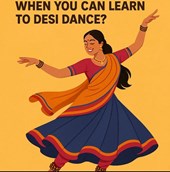
Why Learn to Dance When You Can Learn to Desi Dance?
Bollywood thumkas, elegant mudras, and energetic bhangra hops — Indian dance isn’t just movement, it’s emotion, culture, and cardio rolled into one! And no matter where you live — New Jersey or Nova Scotia — the rhythm of your roots still calls.

Step, Spin, Sway: Why Ballroom Dance Classes Are the Ultimate Mood Booster
Whether you're looking to impress at a wedding, spice up date night, or just find a new way to move—Ballroom dance classes are your ticket to rhythm, confidence, and pure joy. What Is Ballroom Dancing, Really? Ballroom dancing isn’t just abou
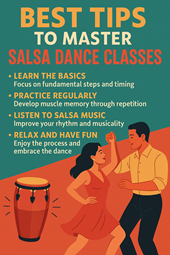
Best Tips to Master Salsa Dance Classes
Salsa dancing is not just a dance; it’s a vibrant expression of culture, rhythm, and joy! Whether you’re a complete beginner or looking to refine your skills, mastering salsa can be an exhilarating journey. At Sulekha Dance Services, we believe that
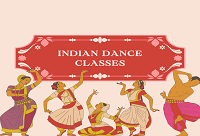
Indian Dance Classes for Beginners- Breaking down Barriers and Building Confidence
Introduction to Indian Dance Indian dance
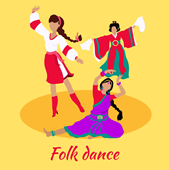
Folk Dance Classes for Kids: Building Cultural Awareness and Appreciation
Dance is more than just movement; it's a celebration of culture, history, and tradition. For kids, learning folk dances provides a unique opportunity to connect with their roots, appreciate diversity, and develop a sense of belonging. At Sulekha Danc

